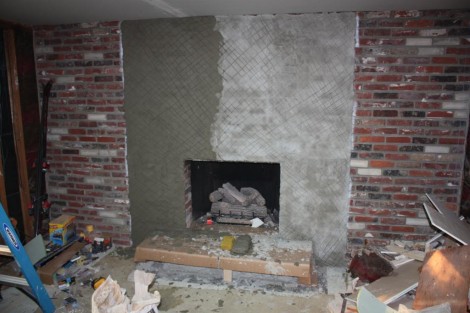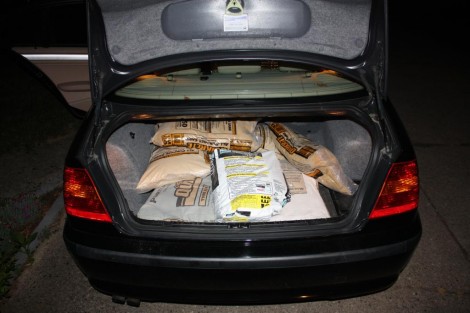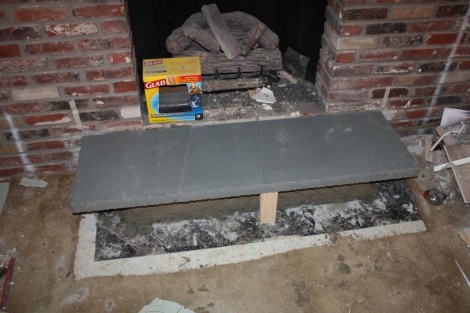To put up the stone veneer over our brick wall, its recommended to put a scratch coat up first. So after putting up the metal lathe, I’ve covered it all in a mixture of 1 part Type N Masonry Cement to 1 part All-purpose Sand. Mixing up the cement and applying it was pretty tiring so I did it in two separate coats (one of which is still wet in the picture). I was happy to see that it dried well and is securely fastened to the wall with no voids. I was a bit concerned that I wouldn’t be able to get enough mortar through the lathe to fill the gabs in the brick.
I also learned that I apparently hung the metal lathe in the wrong direction, its supposed to be put up horizontally, and in a particular direction so that it holds the mortar better. Fortunately this didn’t seem to cause any problems. To help the mortar adhere to the scratch coat you are supposed to ‘comb’ (or scratch i suppose) the scratch coat, to allow the mortar to adhere better. However since I didn’t have cement comb, I just put some grooves in it with the tip of my trowel.


